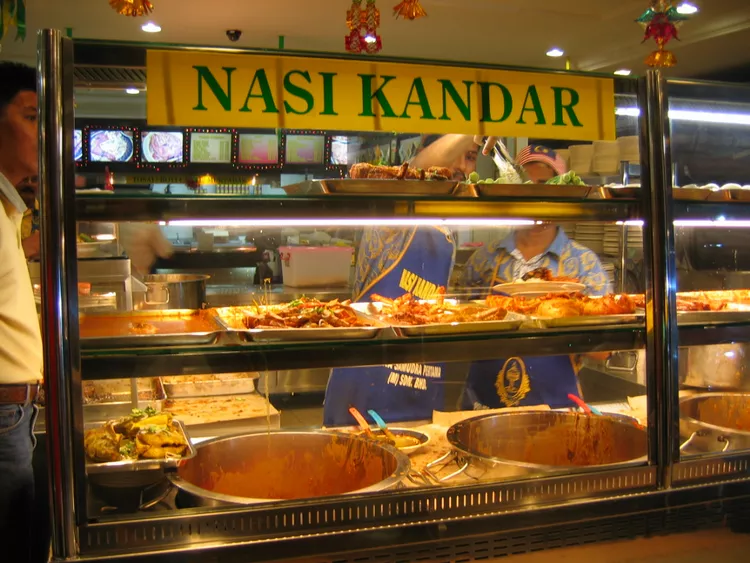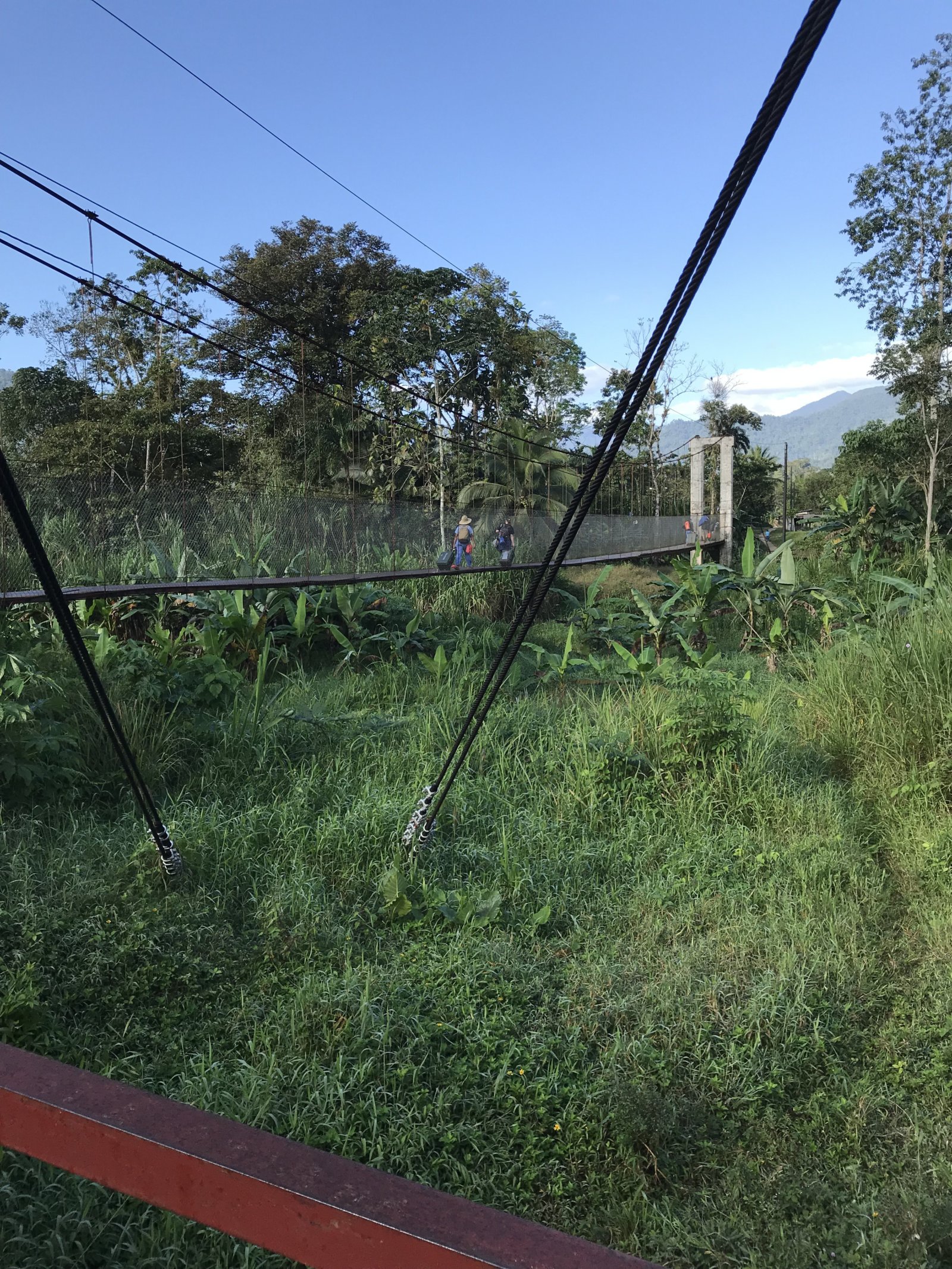Summary
Top Dishes, Mamak Stalls, Origins, Ingredients and What to Try
Fact checked by
Patrice Williams
You might not think of Malaysia as a hotbed for Indian cuisine, however, any respectable foodie will love the Malaysian take on the subcontinent’s dishes.
When Tamil Muslims migrated from South India to the west coast of Malaysia during the 10th century, they brought with them an incredible variety of cooking techniques and spices.
Today, Malaysian Indian food makes up the most popular restaurant choices in Penang and Kuala Lumpur, enhancing the local food scene with their liberal use of fragrant spices and curries along with healthy vegetarian options.
Malaysian Indian Street Food: the “Mamak” Stalls
In the 19th and early 20th centuries, Indian Muslims would sell food from baskets suspended from yokes (“kandar” in Malay, which now lends its name to the “nasi kandar” style of hawker food). Today’s Mamak street stalls are descended from those early street sellers; they’ve given up wandering, settling permanently into restaurants or hawker centers.
Many Malaysian Indian food restaurants are open 24 hours, 365 days a year, barring a few hours on Friday when Muslim Indian stall owners go worship at their mosque.
Today, Malaysian Indian food is found on nearly every corner in Georgetown and Kuala Lumpur. Malaysians of all backgrounds lounge around Mamak stalls sipping milky teh tarik and gossiping. Many Mamak restaurants have become popular hangout spots for locals to socialize and watch sports on television.
If you’re looking for a change from Malaysian noodle dishes or wish to avoid pork, head to the local Mamak restaurant for a cheap, completely new eating experience!
Eating Malaysian Indian Food
Mamak eateries are casual and laid-back; patrons are allowed to linger as long as they want. Food is usually laid out in a buffet-style arrangement and is served only slightly warm. Fresh roti or naan bread is always made upon request as well as fresh juice and tea drinks.
Although some Malaysian Indian restaurants have menus or will cater to special requests, most provide a generous portion of white rice and expect you to choose from foods already prepared. Once you return to your table, someone will come around and write up a ticket based upon what and how much that they see on your plate; you pay before leaving.
With no prices listed and the total bill up to the whim of your waiter, estimating the cost of your meal can be perplexing! Don’t panic; Mamak restaurants are always the cheapest places to get a large meal in Malaysia.
In Georgetown, Mamak stalls are an excellent place to try a large variety of food for a low price.
Popular Malaysian Indian Food
- Nasi Kandar: Perhaps the most common Malaysian Indian food, nasi kandar is simple and delicious. You get a choice of meat, fried chicken, vegetables, or seafood on white rice; several small scoops of different rich curries are then added on top. A green vegetable can be added on the side. The most popular choices found in Mamak stalls are chicken, fish, prawns, squid, beef, and mutton; pork is never served.
- Mee Goreng: The Malaysian Indian food answer for noodles, mee goreng is simply stir-fried yellow noodles served with diced potatoes, bean sprouts, and chilies. The gravy is made from tomato puree with a squeeze of lime to balance the sweetness. Some places add crushed peanuts on top.
- Murtabak: Murtabak is a small, delicious sandwich of curried meat or vegetables between two pieces of chewy roti canai. Like all bread snacks, murtabak is served with rich lentil and dhall dipping sauces.
- Nasi Biryani: Offered as a pricier upgrade from white rice, nasi biryani is a yellow rice packed with complex flavors. Cumin, ginger, cloves, cinnamon, bay leaves, and a staggering arsenal of other pungent spices create a unique taste that will have you hooked on the first bite.
- Chapati: Much like a Mexican tortilla, chapati is a thin wrap made from whole wheat flour cooked on a flat surface. Chapati is usually made to order and is stuffed with your choice of meat or vegetables in curry sauce. Chapati is a delicious, healthy choice for vegetarians.
- Dosa: Sometimes spelled as “thosai,” dosa is a South Indian dish thought to be over 900 years old. A thin crepe made from pounded rice and lentils is fried golden-brown on one side only, then folded around meat or vegetables. Dosa is a good Malaysian Indian food choice for people with wheat allergies.
Extras to Try at Mamak Stalls
Although most Malaysian Indian food in Mamak stalls is already prepared, breads such as naan and roti are always prepared fresh. Watching the experts pour teh tarik or sling roti bread adds to the experience!
- Roti Canai: Pronounced “roe-tee cha-nai”, roti canai is the perfect complement to any Mamak meal for around 33 cents. A small ball of wheat dough is stretched, pulled, and artistically tossed until it becomes stretchy and thin. The dough is then cooked until flaky on a hot surface. Roti canai is served with a small bowl of lentil curry or dhall.
- Teh Tarik: The most popular tea choice for locals, teh tarik is rich black tea mixed with condensed milk. The tea is poured through the air between two containers in an artistic display that has even become a competition in Malaysia. The artists never spill a drop!
Where to Try These Malaysian Indian Dishes
The food scene in Penang covers the entire breadth of Malaysian Indian dishes, not surprising given the city’s history as a British colonial trading post.
Penang locals swear by their favorite mamak stalls and may not always agree on the best places to go; but the crowds heading to the places listed here justify their presence in the shortlist below.
- Nasi Kandar Line Clear. Now run by the third generation of nasi kandar sellers, Line Clear offers the classic nasi kandar experience – open to the streets and heaped on a plate in ugly-delicious style. Location on Google Maps.
- Bangkok Lane Mee Goreng. Located in a corner hawker stall on Jalan Burmah; their mee goreng is the archetypal dish of this type, attracting huge crowds during lunch hour. Location on Google Maps.
- Hameediyah. One of Penang’s oldest restaurants, Hameediyah upgrades the nasi kandar experience with air-conditioned interiors. If you can only eat one dish here, try their murtabak. Location on Google Maps.
Tips for First-Time Malaysian Indian Food Eaters
Mind your manners when eating at a Mamak stall – follow these tips to maximize your Malaysian Indian dining experience:
- Although tipping is never expected, keep in mind that the staff at Mamak stalls work brutally long days and nights – do your best not to make their job harder!
- The word “Mamak” is thought to come from the Tamil word for uncle and is used as a term of respect for elders. Today, the word Mamak is sometimes abused in a derogatory context across Malaysia to refer to the Indian Muslim community. Avoid using the word Mamak unless in reference to food.
- Eaters should be aware that meat served in Mamak restaurants is usually rough-chopped – watch out for small bones in both chicken and fish.





